Cub cadet RT 65 User Manual

Safe Operation Practices • Set-Up • Operation • Maintenance • Service • Troubleshooting • Warranty
Operator’s Manual
Rear Tine Tiller — Model RT 65
 WARNING
WARNING
READ AND FOLLOW ALL SAFETY RULES AND INSTRUCTIONS IN THIS MANUAL
BEFORE ATTEMPTING TO OPERATE THIS MACHINE.
FAILURE TO COMPLY WITH THESE INSTRUCTIONS MAY RESULT IN PERSONAL INJURY.
CUB CADET LLC, P.O. BOX 361131 CLEVELAND, OHIO 44136-0019
Printed In USA |
Form No. 769-04365 |
|
(September 15, 2008) |
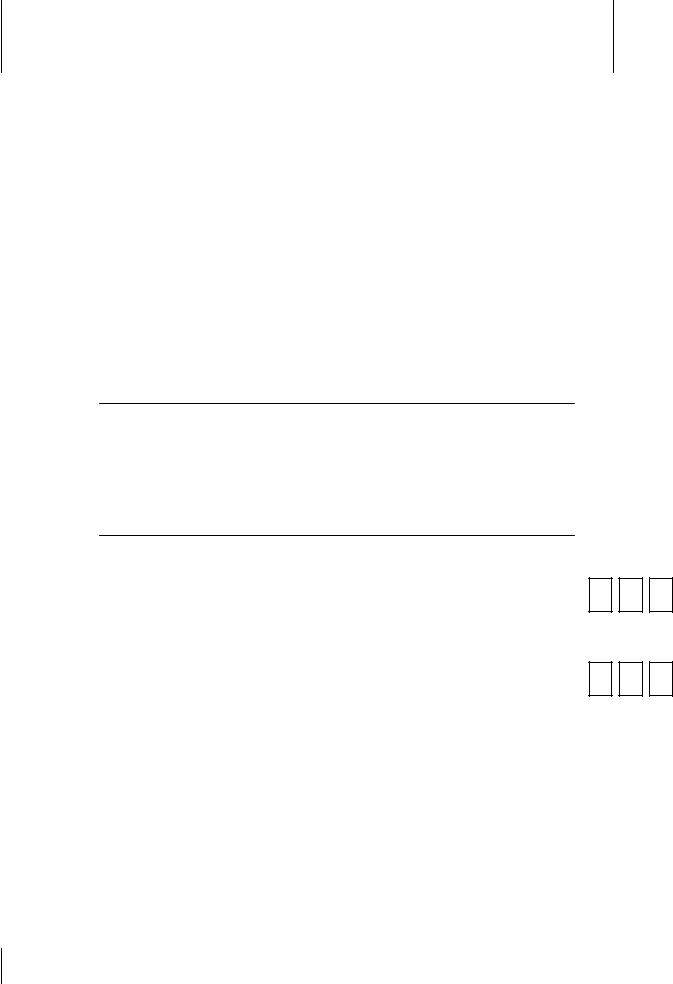
To The Owner
Thank You
Thank you for purchasing a Garden Tiller manufactured by Cub Cadet LLC. It was carefully engineered to provide excellent performance when properly operated and maintained.
Please read this entire manual prior to operating the equipment.
It instructs you how to safely and easily set up, operate and maintain your machine. Please be sure that you, and any other persons who will operate the machine, carefully follow the recommended safety practices at all times. Failure to do so could result in personal injury or property damage.
All information in this manual is relative to the most recent product information available at the time of printing. Review this manual frequently to familiarize yourself with the machine, its features and operation. Please be aware that this Operator’s
Manual may cover a range of product specifications for various models. Characteristics and features discussed and/or illustrated in this manual may not be applicable to all models. Cub Cadet LLC reserves the right to change product specifications, designs and equipment without notice and without incurring obligation.
1
This product has met the rigid safety standards of the Outdoor Power Equipment Institute and an independent testing laboratory. If you have any problems or questions concerning the machine, phone your local Cub Cadet dealer or contact us directly. Cub Cadet’s Customer Support telephone numbers, website address and mailing address can be found on this page. We want to ensure your complete satisfaction at all times.
Throughout this manual, all references to right and left side of the machine are observed from the operating position.
Table of Contents
Safe Operation Practices |
......................................... 3 |
Maintenance & Adjustments |
.................................14 |
Assembly & Set-Up................................................... |
7 |
Service...................................................................... |
16 |
Controls & Features................................................ |
11 |
Troubleshooting...................................................... |
17 |
Operation................................................................ |
12 |
Warranty................................................... |
Back Cover |
Record Product Information |
Model Number |
|
|
|
|
|
|
|
|
|||||||||
Before setting up and operating your new equipment, please |
|
|
|
|
|
|
|
|
|
|
|
|
|
|
|
|
|
|
|
|
|
|
|
|
|
|
|
|
|
|
|
|
|
|
|
||
locate the model plate on the equipment and record the |
|
|
|
|
|
|
|
|
|
|
|
|
|
|
|
|
|
|
information in the provided area to the right. You can locate the |
|
|
|
|
|
|
|
|
|
|
|
|
|
|
|
|
|
|
|
|
|
|
|
|
|
|
|
|
|
|
|
|
|
|
|
||
model plate by standing at the operator’s position and looking |
Serial Number |
|
|
|
|
|
|
|
|
|||||||||
down at the rear of the deck. This information will be necessary, |
|
|
|
|
|
|
|
|
||||||||||
should you seek technical support via our web site or with your |
|
|
|
|
|
|
|
|
|
|
|
|
|
|
|
|
|
|
|
|
|
|
|
|
|
|
|
|
|
|
|
|
|
|
|
||
local Cub Cadet dealer. |
|
|
|
|
|
|
|
|
|
|
|
|
|
|
|
|
|
|
|
|
|
|
|
|
|
|
|
|
|
|
|
|
|
|
|
||
|
|
|
|
|
|
|
|
|
|
|
|
|
|
|
|
|
|
|
|
|
|
|
|
|
|
|
|
|
|
|
|
|
|
|
|
|
|
Customer Support
If you have difficulty assembling this product or have any questions regarding the controls, operation, or maintenance of this machine, you can seek help from the experts. Choose from the options below:
◊Visit us on the web at www.cubcadet.com
◊Locate your nearest Cub Cadet Dealer at (877) 282-8684
◊Write us at Cub Cadet LLC • P.O. Box 361131 • Cleveland, OH • 44136-0019
2
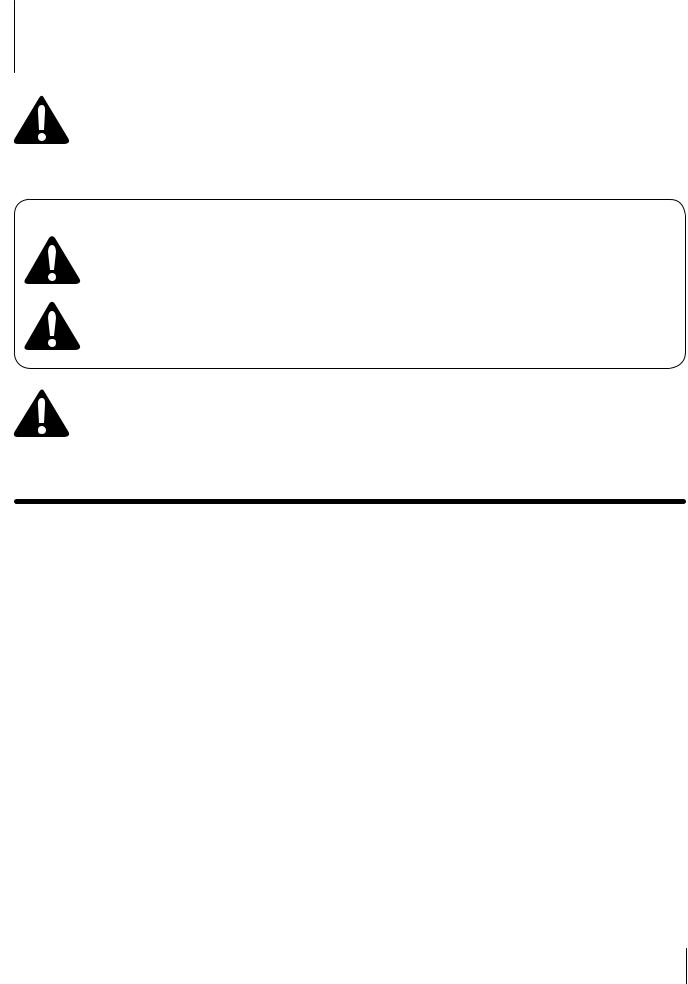
Important Safe Operation Practices |
2 |
|
|
|
|
WARNING! This symbol points out important safety instructions which, if not followed, could endanger the personal safety and/or property of yourself and others. Read and follow all instructions in this manual before attempting to operate this machine. Failure to comply with these instructions may result in personal injury.
When you see this symbol. HEEDITSWARNING!
California Proposition 65
WARNING!Engine Exhaust, some of its constituents, and certain vehicle components contain or emit chemicals known to State of California to cause cancer and birth defects or other reproductive harm.
WARNING!Battery posts, terminals, and related accessories contain lead and lead compounds, chemicals known to the State of California to cause cancer and reproductive harm. Wash hands after handling
DANGER!This machine was built to be operated according to the safe operation practices in this manual. As with any type of power equipment, carelessness or error on the part of the operator can result in serious injury. This machine is capable of amputating fingers, hands, toes and feet. Failure to observe the following safety instructions could result in serious injury or death.
Training
1.Read, understand, and follow all instructions on the machine and in the manual(s) before attempting to assemble and operate. Keep this manual in a safe place for future and regular reference and for ordering replacement parts.
2.Be familiar with all controls and their proper operation.
Know how to stop the machine and disengage them quickly.
3.Never allow children under 14 years of age to operate this machine. Children 14 and over should read and understand the instructions and safe operation practices in this manual and on the machine and be trained and supervised by an adult.
4.Never allow adults to operate this machine without proper instruction.
5.Keep the area of operation clear of all persons, particularly small children and pets. Stop machine if anyone enters the area.
Preparation
1.Thoroughly inspect the area where the equipment is to be used. Remove all stones, sticks, wire, and other foreign objects which could be tripped over and cause personal injury.
2.Wear sturdy, rough-soled work shoes and close fitting slacks and shirt. Loose fitting clothes or jewelry can be caught in moving parts. Never operate this machine in bare feet or sandals.
3.Disengage clutch levers and shift (if provided) into neutral (“N”) before starting the engine.
4.Never leave this machine unattended with the engine running.
5.Never attempt to make any adjustments while engine is running, except where specifically recommended in the operator’s manual.
Safe Handling of Gasoline:
To avoid personal injury or property damage use extreme care in handling gasoline. Gasoline is extremely flammable and the vapors are explosive. Serious personal injury can occur when gasoline is spilled on yourself or your clothes which can ignite. Wash your skin and change clothes immediately.
a.Use only an approved gasoline container.
b.Never fill containers inside a vehicle or on a truck or trailer bed with a plastic liner. Always place containers on the ground away from your vehicle before filling.
3
c.When practical, remove gas-powered equipment from the truck or trailer and refuel it on the ground. If this is not possible, then refuel such equipment on a trailer with a portable container, rather than from a gasoline dispenser nozzle.
d.Keep the nozzle in contact with the rim of the fuel tank or container opening at all times until fueling is complete. Do not use a nozzle lock-open device.
e.Extinguish all cigarettes, cigars, pipes and other sources of ignition.
f.Never fuel machine indoors.
g.Never remove gas cap or add fuel while the engine is hot or running. Allow engine to cool at least two minutes before refueling.
h.Never over fill fuel tank. Fill tank to no more than ½ inch below bottom of filler neck to allow space for fuel expansion.
i.Replace gasoline cap and tighten securely.
j.If gasoline is spilled, wipe it off the engine and equipment. Move unit to another area. Wait 5 minutes before starting the engine.
k.To reduce fire hazards, keep machine free of grass, leaves, or other debris build-up. Clean up oil or fuel spillage and remove any fuel soaked debris.
l.Never store the machine or fuel container inside where there is an open flame, spark or pilot light as on a water heater, space heater, furnace, clothes dryer or other gas appliances.
Operation
1.Do not put hands or feet near rotating parts. Contact with the rotating parts can amputate hands and feet.
2.Do not operate machine while under the influence of alcohol or drugs.
3.Never operate this machine without good visibility or light. Always be sure of your footing and keep a firm hold on the handles.
4.Keep bystanders away from the machine while it is in operation. Stop the machine if anyone enters the area.
5.Be careful when tilling in hard ground. The tines may catch in the ground and propel the tiller forward. If this occurs, let go of the handle bars and do not restrain the machine.
6.Exercise extreme caution when operating on or crossing gravel surfaces. Stay alert for hidden hazards or traffic. Do not carry passengers.
7.Never operate the machine at high transport speeds on hard or slippery surfaces.
8.Exercise caution to avoid slipping or falling.
9.Look down and behind and use care when in reverse or pulling machine towards you.
10.Start the engine according to the instructions found in this manual and keep feet well away from the tines at all times.
11.After striking a foreign object, stop the engine, disconnect the spark plug wire and ground against the engine. Thoroughly inspect the machine for any damage. Repair the damage before starting and operating.
12.Disengage all clutch levers (if fitted) and stop engine before you leave the operating position (behind the handles). Wait until the tines come to a complete stop before unclogging the tines, making any adjustments, or inspections.
13.Never run an engine indoors or in a poorly ventilated area.
Engine exhaust contains carbon monoxide, an odorless and deadly gas.
14.Muffler and engine become hot and can cause a burn. Do not touch.
15.Use caution when tilling near fences, buildings and underground utilities. Rotating tines can cause property damage or personal injury.
16.Do not overload machine capacity by attempting to till soil too deep at too fast of a rate.
17.If the machine should start making an unusual noise or vibration, stop the engine, disconnect the spark plug wire and ground it against the engine. Inspect thoroughly for damage. Repair any damage before starting and operating.
18.Keep all shields, guards, and safety devices in place and operating properly.
19.Never pick up or carry machine while the engine is running.
20.Use only attachments and accessories approved by the manufacturer. Failure to do so can result in personal injury.
21.If situations occur which are not covered in this manual, use care and good judgement. Contact Customer Support for assistance and the name of you nearest servicing dealer..
Maintenance & Storage
1.Keep machine, attachments and accessories in safe working order.
2.Allow a machine to cool at least five minutes before storing. Never tamper with safety devices. Check their proper operation regularly.
3.Check bolts and screws for proper tightness at frequent intervals to keep the machine in safe working condition. Also, visually inspect machine for any damage.
4.Before cleaning, repairing, or inspecting, stop the engine and make certain the tines and all moving parts have stopped. Disconnect the spark plug wire and ground it against the engine to prevent unintended starting.
5.Do not change the engine governor settings or over-speed the engine. The governor controls the maximum safe operating speed of engine.
6.Maintain or replace safety and instruction labels, as necessary.
7.Follow this manual for safe loading, unloading, transporting, and storage of this machine.
8.Always refer to the operator’s manual for important details if the machine is to be stored for an extended period.
4 |
|
Section 2 — Important Safe Operation Practices |
|
||
|
|
|

9.If the fuel tank has to be drained, do this outdoors.
10.Observe proper disposal laws and regulations for gas, oil, etc. to protect the environment.
11.According to the Consumer Products Safety Commission (CPSC) and the U.S. Environmental Protection Agency (EPA), this product has an Average Useful Life of seven (7) years,
or 130 hours of operation. At the end of the Average Useful Life have the machine inspected annually by an authorized service dealer to ensure that all mechanical and safety systems are working properly and not worn excessively. Failure to do so can result in accidents, injuries or death.
Notice Regarding Emissions
Engines which are certified to comply with California and federal EPA emission regulations for SORE (Small Off Road Equipment) are certified to operate on regular unleaded gasoline, and
may include the following emission control systems: Engine Modification (EM), Oxidizing Catalyst (OC), Secondary Air Injection (SAI) and Three Way Catalyst (TWC) if so equipped.
Spark Arrestor
Warning! This machine is equipped with an internal combustion engine and should not be used on or near any unimproved forest-covered, brushcovered or grass-covered land unless the engine’s exhaust system is equipped with a spark arrester meeting applicable local or state laws (if any).
If a spark arrester is used, it should be maintained in effective working order by the operator. In the State of California the above is required by law (Section 4442 of the California Public Resources Code). Other states may have similar laws. Federal laws apply on federal lands.
A spark arrester for the muffler is available through your nearest engine authorized service dealer or contact the service department, P.O. Box 361131 Cleveland, Ohio 44136-0019.
Section 2 — Important Safe Operation Practices |
|
5 |
|
||
|
|
|
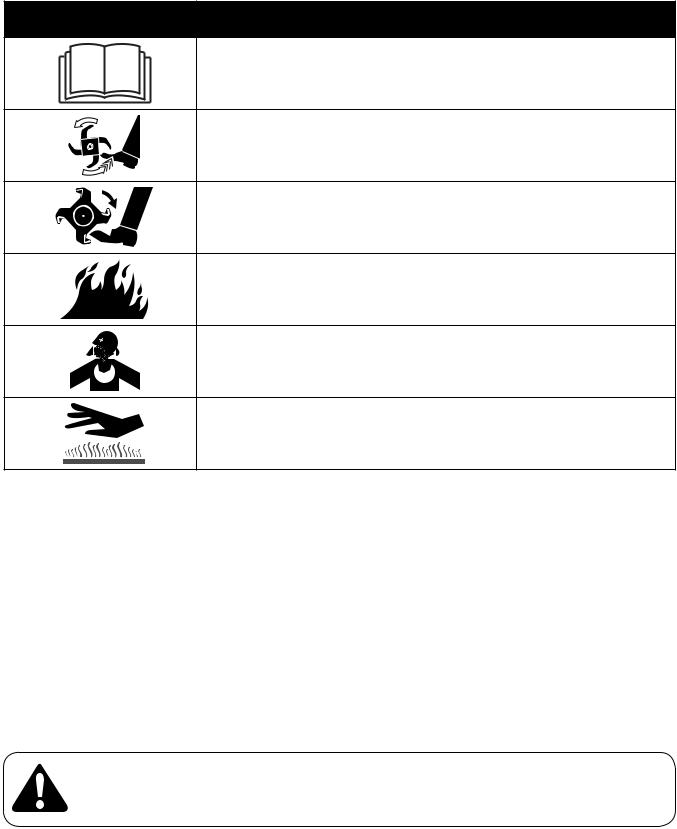
Safety Symbols
This page depicts and describes safety symbols that may appear on this product. Read, understand, and follow all instructions on the machine before attempting to assemble and operate.
Symbol |
Description |
READ THE OPERATOR’S MANUAL(S)
Read, understand, and follow all instructions in the manual(s) before attempting to assemble and operate
WARNING— ROTATING TINES
Do not put hands or feet near rotating parts. Contact with the rotating parts can amputate hands and feet.
WARNING— ROTATING TINES
Do not put hands or feet near rotating parts. Contact with the rotating parts can amputate hands and feet.
WARNING—GASOLINE IS FLAMMABLE
Allow the engine to cool at least two minutes before refueling.
WARNING— CARBON MONOXIDE
Never run an engine indoors or in a poorly ventilated area. Engine exhaust contains carbon monoxide, an odorless and deadly gas.
WARNING— HOT SURFACE
Engine parts, especially the muffler, become extremely hot during operation. Allow engine and muffler to cool before touching.
warning! Your Responsibility—Restrict the use of this power machine to persons who read, understand and follow the warnings and instructions in this manual and on the machine.
SAVE THESE INSTRUCTIONS!
6 |
|
Section 2 — Important Safe Operation Practices |
|
||
|
|
|
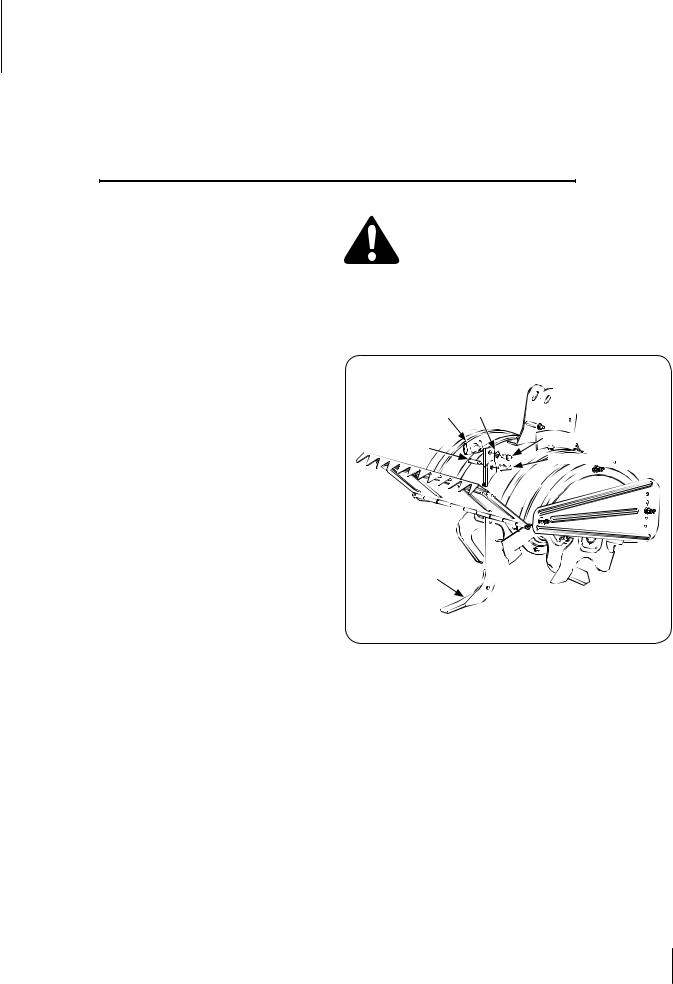
Assembly & Set-Up |
3 |
|
|
Contents of Carton |
|
|
• |
One Tiller |
• |
One Handlebar Assembly |
• |
One Shift Rod |
• |
One Depth Stake |
• |
One Operator’s Manual |
• |
One Engine Operator’s Manual |
Assembly
Unpacking Instructions
NOTE: Reference to the right or left side of the tiller is determined from the operator’s position behind the machine.
1.Remove the staples, break the glue on the top flaps, or cut the tape at the end of the carton and peel along the top flap to open carton.
2.Remove the loose parts included with the tiller (i.e., operator’s manual, etc.).
3.Cut the corners and lay the carton down flat.
4.Remove the packing materials.
5.Roll or slide the tiller out of the carton. Check the carton thoroughly for loose parts.
6.Extend the control cable and lay it on the floor. Be careful not to bend or kink the control cable.
NOTE: This tiller is shipped without gasoline or oil in the engine.
Be certain to service engine with gasoline and oil as instructed in the separate Engine Operator’s Manual before operating your machine.
Depth Stake
WARNING! Disconnect the spark plug wire and ground it against the engine to prevent unintended starting.
1.Tip the tiller forward so that it rests on the front counterweight.
2.Unthread the T-knob from the top of the depth stake and remove the flat washer and hex bolt. Remove the hairpin clip from the clevis pin. See Fig. 3-1.
T-Knob Flat Washer |
|
|
Clevis |
Hex Bolt |
|
Pin |
||
Hairpin Clip |
||
|
Depth
Stake
Figure 3-1
3.Raise the tine shield hinge flap assembly and insert the depth stake assembly into the slot — under the tine shield
— and up through the tine shield assembly.
4.Insert the clevis pin through the tine shield and depth stake assemblies. Secure it with the hairpin clip.
5.Insert a hex bolt into the top hole of the depth stake assembly. Place the flat washer on the hex bolt and thread the T-knob onto the hex bolt. Tighten securely. See Fig. 3-1.
6.Tip the tiller back down so that it rests on the tines.
7
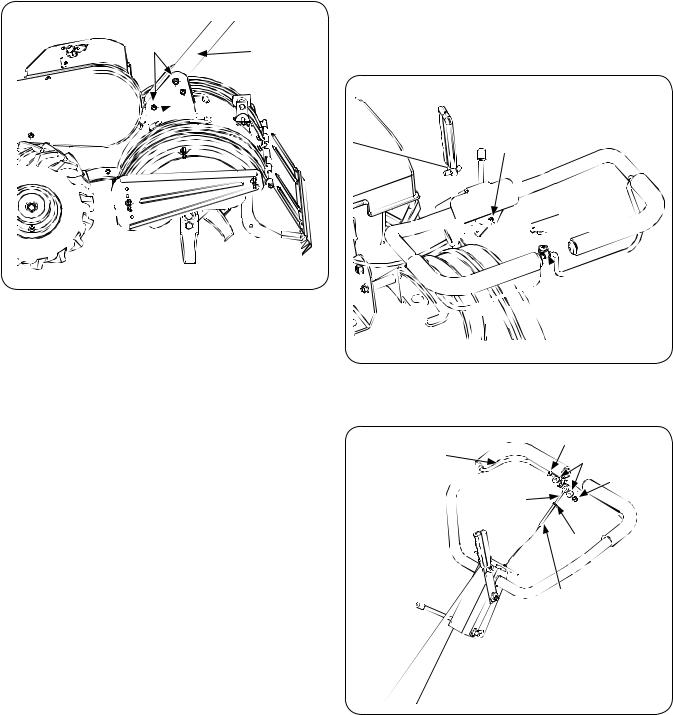
Handle
1.Remove the top two bolts and flange lock nuts from the handle mounting brackets, but do not remove the bottom bolt and nut. See Fig. 3-2.
Bolts |
Handle |
|
|
|
Assembly |
Handle



Bracket
Figure 3-2
2.Place the handle assembly in position between the handle mounting brackets.
3.Line up the holes in the handle with the holes in the bracket and secure it with hardware previously removed.
Clutch Cable
Attach the clutch cable to the handle as follows: (be careful not to kink the cable)
1.Remove the threaded eyebolt and nut from the cable end.
2.Route the clutch cable to the right side of the handle mounting brackets and underneath the handle.
3.Push the cable through the hole in the center of the handle and snap into the plastic fitting. See Fig. 3-3.
Plastic Fitting
Internally




















 ThreadedTube
ThreadedTube






 Slot-Head
Slot-Head
Screw, Nut
















 & Flat Washers
& Flat Washers
Figure 3-3
4.Remove the slot head screw, nut, and two flat washers from the clutch bail. See Fig. 3-4.
Clutch Control |
Slot Head Screw |
|
Flat Washers |
||
|
||
Threaded |
Nut |
|
Eyebolt |
|
|
|
Nut |
|
|
Internally |
|
|
Threaded |
|
|
Tube |
Figure 3-4
8 |
|
Section 3— Assembly & Set-Up |
|
||
|
|
|
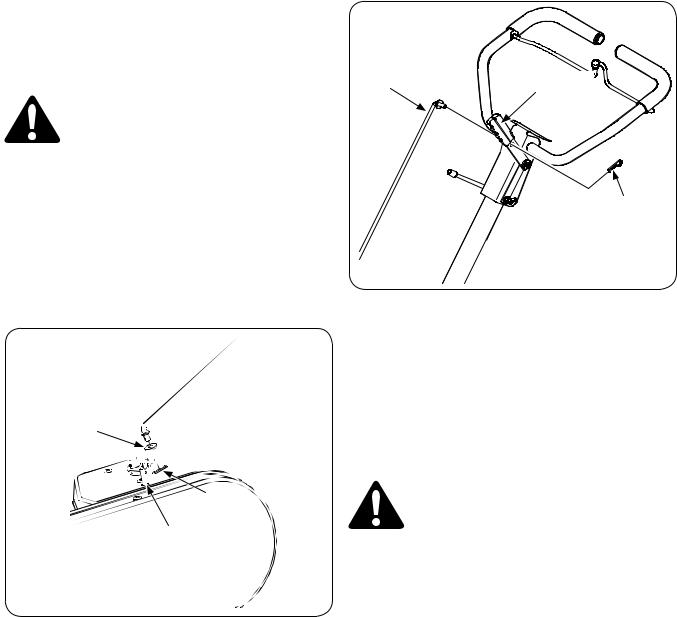
5.Fasten the threaded eyebolt onto the bail by securing it from the top with the slot head screw, flat washers and lock nut.
6.Thread the eyebolt and nut removed earlier into the internally threaded tube at the end of the cable. Thread engagement should be about 3⁄4”. Tighten the nut against the tube at end of cable. See Fig. 3-4.
NOTE: Do not overtighten the clutch cable. Too much tension may cause it to break.
WARNING! Be certain to check the clutch cable adjustment before operating the tiller.
7.See the Maintenance & Adjustments Section for instructions on adjusting the clutch belt.
Control Rod
1.Make sure the handle assembly is in the highest position.
Refer to the Maintenance & Adjustments Section.
2.Remove hairpin clips from control rod, leave the rubber washers on the control rod.
3.Insert the shorter (angled) end of the control rod through the indicator bracket on the shift cover and secure with the hairpin clip that was previously removed. See Fig. 3-5.
4.Insert the longer end of the control rod through the hole in the gear selector handle and secure with the hairpin clip.
See Fig. 3-6.
Control |
Gear Selector |
Rod |
Handle |
Hairpin
Clip
Figure 3-6
 Control Rod
Control Rod
Rubber Washer









 Indicator Bracket
Indicator Bracket
Hairpin Clip
Idler Puller Rod
Figure 3-5
Adjustments
Clutch
1.Position the tiller so the front counterweight is against a solid object, such as a wall. With the gear selection lever in NEUTRAL, start the engine. Refer to the separate Engine Operator’s Manual. Standing on the right side of the tiller, examine the belt (inside the belt cover). It should not be turning.
WARNING! Do not put your fingers under the belt cover.
2.If the belt turns without bail engaged, adjust it by unthreading the internally threaded tube at the end of the cable a few turns clockwise (when standing in the operator’s position) and then retighten the nut against the tube.
3.Move the shift lever to the FORWARD position.
4.Carefully engage the clutch by lifting the clutch control bail against the handle. The wheels should spin. If the wheels do not spin with the tiller in forward, adjust by unthreading the tube at the end of the cable a few turns counterclockwise, when standing in operator’s position.
5.Retighten the nut against the tube.
6.Recheck both adjustments, and readjust as necessary.
NOTE: A secondary cable adjustment is available if you reach the point that additional adjustment is needed. Remove the belt cover and move the hex nuts at the other end of the cable towards the end of the casing. Then readjust the hex nuts at the handle.
Section 3 — Assembly & Set-Up |
|
9 |
|
||
|
|
|

Set-Up
Tires
The tires on the tiller may be over-inflated for shipping purposes. Reduce the tire pressure before operating the tiller. Recommended operating tire pressure is approximately
20 PSI (check the sidewall of the tire for the manufacturer’s recommended pressure). Be sure that both tires are inflated equally or the tiller will pull to one side.
Gas & Oil Fill-Up
Service the engine with gasoline and oil as instructed in the separate Engine operator’s Manual packed with your tiller. Read the instructions carefully.
WARNING! Use extreme care when handling gasoline. Gasoline is extremely flammable and the vapors are explosive. Never fuel the machine indoors or while the engine is hot or running.
10 Section 3— Assembly & Set-Up
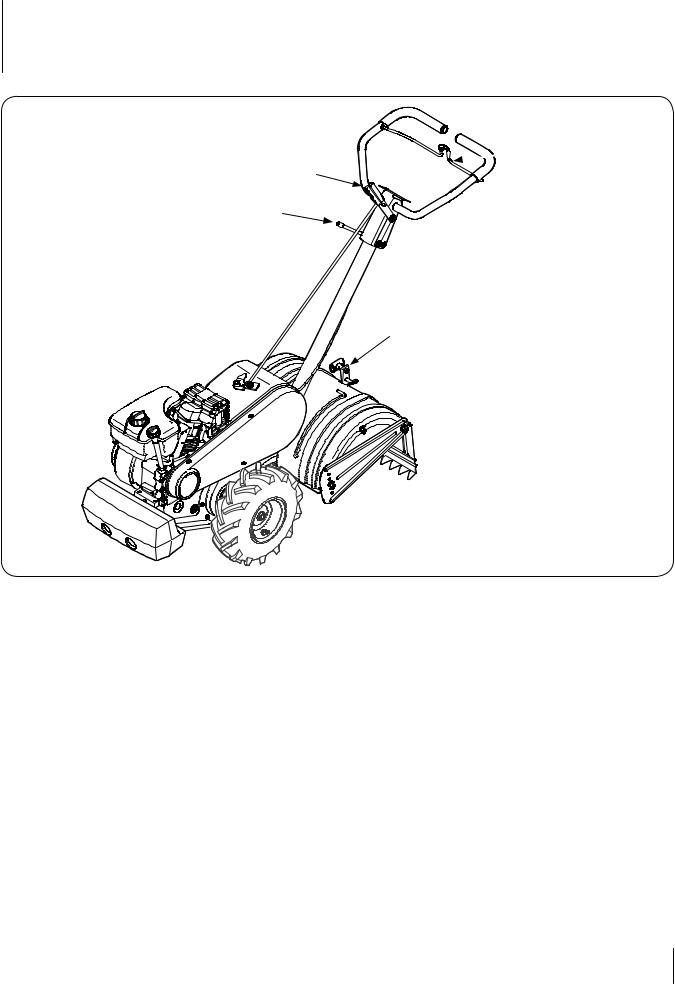
Controls and Features |
4 |
|
|
|
|
 Clutch Control
Clutch Control
Gear Selection Handle
Handle Adjustment Lock
Depth Stake
|
Figure 4-1 |
Engine Controls |
Throttle Control |
See the separate Engine Operator’s Manual for additional information and functions of the engine controls.
The throttle control lever is located on the engine. It controls the engine speed and stops the engine.
Gear Selection Handle
The gear selection handle is located in the center of the handle on the tiller. It is used to select NEUTRAL, REVERSE, or one of the FORWARD modes.
Clutch Control
The clutch control is located beneath the handle. Squeezing the clutch control against the handle engages the wheel and tine drive mechanisms.
Handle Adjustment Lock
The handle may be adjusted to the height desired. Loosen the handle height adjustment lock a few turns. Pivot handle up or down to desired position and tighten the lock.
Choke Lever (If Equipped)
The choke lever is located by the throttle. It is used to enrich the fuel mixture in the carburetor when starting a cold engine.
Primer Button (If Equipped)
The primer button is located behind the air cleaner. It is used to enrich the fuel mixture in the carburetor when starting a cold engine.
Depth Stake
The depth stake controls the tilling depth. Refer to the Operation Section.
11
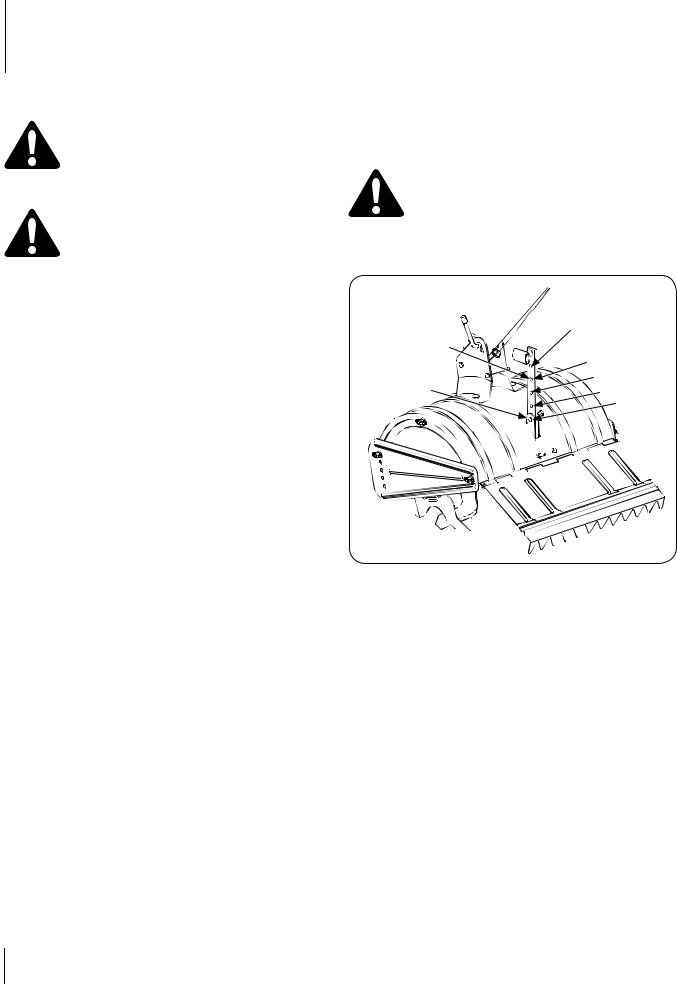
Operation |
5 |
|
|
|
|
Starting the Engine Setting The Depth
WARNING! Read, understand, and follow all instructions and warnings on the machine and in
this manual before operating.
NOTE: When pushing the tiller with the engine off, you will hear a ratcheting sound or gear noise this is normal.
WARNING! Be sure no one is standing in front of the tiller while the engine is running or being started.
1.Place the gear selection lever in NEUTRAL.
2.Place the throttle control lever in FAST position or if equipped, place the engine speed control in the START position.
3.Move the choke lever to CHOKE position or if equipped, push the primer two (2) or three (3) times. Wait about two
(2) seconds between each push.
NOTE: A warm engine may not require choking or priming.
4.Stand at the side of the tiller. Grasp the starter handle and pull it out slowly, until it pulls slightly harder. Let the rope rewind slowly.
5.Pull the starter handle rapidly. Do not allow the handle to snap back. Allow it to rewind slowly while keeping a firm hold on the starter handle.
6.Repeat the previous steps until the engine starts.
7.As the engine warms up and begins to operate evenly, move the choke lever gradually to the RUN position. If the engine falters, return to the choke position, then slowly move to the RUN position.
8.Refer to the Engine Operator’s Manual for additional engine information.
NOTE: After starting and prior to using the tiller for the first time, be certain to check the clutch adjustment as described in Maintenance & Adjustments Section.
Stopping the Engine
1.Move the throttle control to the STOP or OFF position.
2.Disconnect the spark plug wire and ground it to prevent accidentally starting the equipment while it is unattended.
NOTE: After the first ten hours of operation, recheck the clutch adjustment. Refer to Clutch adjustment in the
Assembly & Set Up Section.
Tilling depth is controlled by the depth stake which can be adjusted to five different settings. Adjust the side shields as you adjust the depth stake.
WARNING! Be certain spark plug wire is disconnected and grounded against the engine when performing any adjustments.
1.When using the tiller for the first time, use the second adjustment hole from the top (1” of tilling depth). See Fig. 5-1.
|
Transportation |
Use This Position |
Position |
the First Time |
|
Clevis |
1” |
3” |
|
Pin |
5” 7” |
|
Figure 5-1
12
